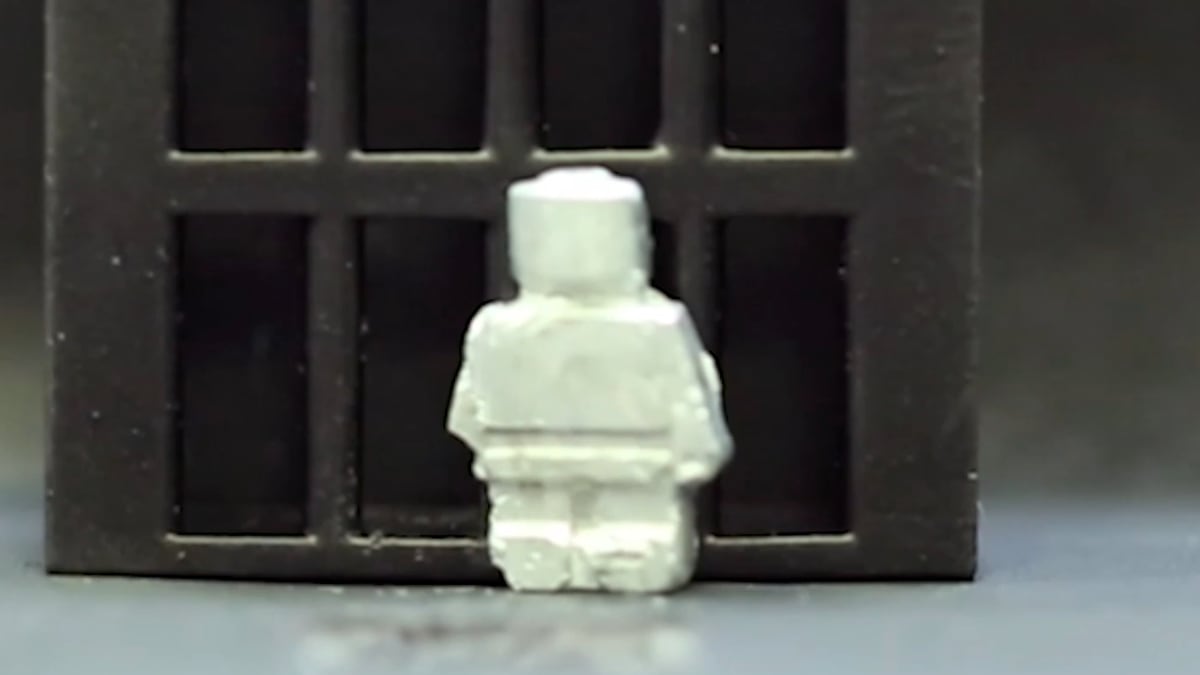In the movie
Terminator 2: Judgment Day
, the first terminator (played by Arnold Schwarzenegger) defends Sarah and John Connor from a new generation of liquidator from the future, the T-1000.
The first thing that catches the attention of this robot is that it is so ductile that it deforms after receiving a blow or a bullet and immediately recomposes itself.
Now, Chinese and American researchers have created something similar to a T-1000, in a reduced version.
His creation, made of metal that melts at near room temperature, can go from a solid to a liquid at the will of its creators.
In the experiments they have carried out, he was able to escape from a prison by going through the bars, dissolving completely and recomposing himself on the other side.
But it has also shown its ability to expel a foreign object inside a stomach or to solder an LED circuit.
The T-1000 in the James Cameron film was a prototype manufactured by the evil company Skynet, according to the script, with a "mimetic polyalloy" (sic) of liquid metal.
The robot now presented in the scientific journal
Matter
is also made with a matrix of a metal, gallium, which, when pure, melts at 29.8 degrees.
I mean, it would melt in your hands.
To this matrix they added particles of an alloy of three other elements, neodymium, iron and boron.
With this, they amplified the device's response to magnetic fields.
The robot has been called MPTM, an acronym for Magnetoactive Phase Transition Material.
That is, a magnetic field at a certain intensity induces an electric current inside the gallium that generates heat, turning it from solid to liquid.
Without reaching that threshold, these magnetic fields are also what allow him to jump 20 times his height, rotate on himself at 1,500 revolutions per minute or move at a speed of one meter per second.
It's not as big as the T-1000 in the movie—it's barely an inch off the ground—but it's a real atomic ant.
“The figure is similar in size to a LEGO figurine and a magnetic field is used to melt it into a liquid”
Carmel Majidi, mechanical engineer from Carnegie Mellon University (United States)
In one of the videos (see above) distributed by the researchers, it can be seen how he escapes from a kind of prison by going through the bars in a liquid state and solidifying again outside the prison.
The professor of mechanical engineering at Carnegie Mellon University (United States) Carmel Majidi explains what they have done: “The figure is similar in size to a commercial LEGO figurine: approximately five millimeters wide and one centimeter high.
A magnetic field is used to melt it to a liquid and remove it from the enclosure.”
In the same way that gallium melts when it approaches 30 degrees, it solidifies below those degrees.
And once through the bars, it returns to being a hard metal.
That it melts in the hand does not prevent it from having the great hardness of other metals.
The scientists devised several experiments to see what things their creature could do.
In one, they turn it into a screw capable of reaching corners, occupying the hole in its liquid form and sealing it once solid.
In another, MPTM acts as a soldering iron on an LED circuit, using part of itself as solder.
But, if it melts at room temperature, what will happen when the circuit gets hot while running?
“The gallium in the material works both as a solder and as a conductive material.
Like other metals, it has a high electrical conductivity, so it is very effective for connecting circuits”, explains Majidi, who acknowledges the problem of its change of state.
“Due to its low melting point, it is possible for gallium to soften and even melt when the circuit gets hot.
It will still be conductive in a liquid state, so it would not affect its performance.
However, to prevent it from leaking or spilling, it would have to be sealed with rubber or other soft insulating material,” he says.
Majidi is director of the Soft Machines Lab at Carnegie Mellon, so his field is soft materials, from crystals to liquid metals, so he's not overly concerned that his MPTM will melt easily:
“Most of my research focuses on circuits made of liquid metal in which the conductive material remains liquid during circuit operation.
As long as the metal is properly sealed and insulated, you generally wouldn't have to worry about leaks,” he says.
For its creators, MPTM could have relevant medical applications.
Using a water-filled model of an artificial stomach, they solved two very common problems in medicine.
In one of them, they drove the robot to a foreign body that had to be removed from there.
Once next to him, the magnet melted the robot that hugged the object, a little ball.
Once cool, they quickly extracted it again by playing with the magnets.
In the other, what they tested was the administration of a drug wrapped in MPTM.
After taking it to the place where it was needed, it melted, releasing it.
In a note, Chengfeng Pan, an engineer at the Chinese University of Hong Kong and co-author of the paper, commented that "giving robots the ability to switch between liquid and solid states gives them more functionality."
Next, says Pan,
You can follow
MATERIA
on
,
and
, or sign up here to receive
our weekly newsletter
.















